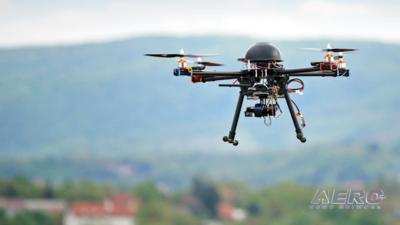Tue, Aug 30, 2016
New FAA Rule Allows More Businesses And Innovators To Fly, Unlocks Economic Benefits
With regulations governing civil and commercial operations of unmanned aircraft systems (UAS) now in effect, more businesses and innovators are poised to take flight and unlock the tremendous economic benefits of the technology, AUVSI President and CEO Brian Wynne said at a press conference Monday. Wynne joined U.S. Department of Transportation Secretary Anthony Foxx and FAA Administrator Michael Huerta to mark the historic moment that has opened up the U.S. skies to more commercial UAS.

“The United States has been a pioneer in aviation since the Wright Brothers first took to the skies more than 100 years ago,” Wynne (pictured in file photo) said. “Today we’ve reached another significant milestone. With the small UAS rule now in effect, the commercial drone industry is cleared for takeoff.”
Wynne added that the UAS industry is poised to be one of the fastest-growing in American history. AUVSI’s economic report has forecasted that the UAS industry will create more than 100,000 jobs and generate more than $82 billion for the economy in the first decade following UAS integration into the national airspace.
“The small UAS rule establishes a clear regulatory framework and helps to reduce many barriers to civil and commercial operations,” Wynne said. “In reducing those barriers, the rule allows businesses and innovators to harness the tremendous potential of UAS and unlock the many economic and societal benefits the technology offers.”
Wynne pointed to the flood of exemption requests the FAA has received as strong evidence that the commercial UAS market is poised for incredible growth. In Sept. 2014, the FAA started granting exemptions for certain low-risk commercial UAS applications under Section 333 of the FAA Modernization and Reform Act of 2012.
AUVSI analyzed the more than 5,500 exemptions approved by the FAA before the small UAS rule went into effect. The results highlight both the wide number of industries adopting the technology, as well as foreshadow the exciting potential of the industry.
Specifically, AUVSI’s report finds:
- The approved exemptions cover 42 types of business operations. Aerial photography was the most popular with companies noting this application 4,594 times. Real estate was the next most popular, with operators requesting this application 3,274 times, followed by aerial inspection at 2,976.
- Exemptions were approved for operators in all 50 states and Puerto Rico. California received the most with 639, followed by Florida with 571 and Texas with 468.
- Most commercial UAS operators are small businesses. About 90 percent of the operators and companies receiving exemptions make less than $1 million in annual revenue and have fewer than 10 employees.

There is still work to be done in order for businesses to take full advantage of UAS technology, and the UAS industry continues to look toward the future to make full UAS integration a reality. In August, the AUVSI Foundation partnered with the White House Office of Science and Technology Policy for a workshop on drones and the future of aviation. A report on insights from the government, academic and industry representatives who participated in the workshop is expected to be released soon.
“We look forward to continued industry-government collaboration that advances UAS research and paves the way for a true, holistic plan for full UAS integration, including beyond line of sight operations, flights over people, access to higher altitudes and platforms above 55 pounds,” Wynne said.
(Source: AUVSI news release)
More News
Say Altitude Used by ATC to ascertain an aircraft's specific altitude/flight level. When the aircraft is climbing or descending, the pilot should state the indicated altitude round>[...]
Aero Linx: European Air Law Association (EALA) EALA was established in 1988 with the aim to promote the study of European air law and to provide an open forum for those with an int>[...]
From 2023 (YouTube Version): The Life, Death, Life, Death, and Life of a Glorious Warbird In 1981, business-owner Jim Tobul and his father purchased a Chance-Vought F4U Corsair. Mo>[...]
Also: USCG Retires MH-65 Dolphins, Irish Aviation Authority, NATCA Warns FAA, Diamond DA42 AD This summer, history enthusiasts will have a unique opportunity to experience World Wa>[...]
Also: WACO Kitchen Bails, French SportPlane Mfr to FL, Dynon-Advance Flight Systems, Innovation Preview Bobby Bailey, a bit of a fixture in sport aviation circles for his work with>[...]
 ANN's Daily Aero-Term (05.01.24): Say Altitude
ANN's Daily Aero-Term (05.01.24): Say Altitude ANN's Daily Aero-Linx (05.01.24)
ANN's Daily Aero-Linx (05.01.24) Classic Aero-TV: Korean War Hero Twice Reborn
Classic Aero-TV: Korean War Hero Twice Reborn Airborne 04.29.24: EAA B-25 Rides, Textron 2024, G700 Deliveries
Airborne 04.29.24: EAA B-25 Rides, Textron 2024, G700 Deliveries Airborne Affordable Flyers 05.02.24: Bobby Bailey, SPRG Report Cards, Skydive!
Airborne Affordable Flyers 05.02.24: Bobby Bailey, SPRG Report Cards, Skydive!




